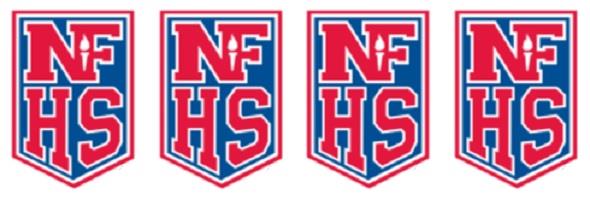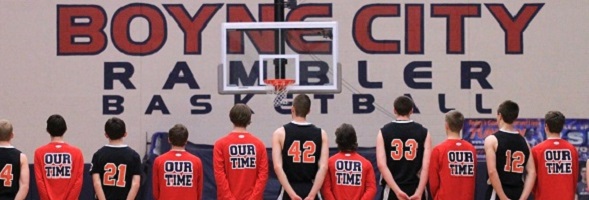
Truth About Sports Scholarships
March 30, 2018
 By Bob Gardner
By Bob Gardner
Executive Director of the National Federation of State High School Associations
Many parents are trying to live the dream through their sons and daughters – the dream of landing a college athletic scholarship by specializing in a sport year-round. Unfortunately, most of these dreams are never realized.
The odds of a sports scholarship paying for even a portion of a student’s college education are miniscule.
The College Board, a not-for-profit organization comprised of 6,000 of the world’s leading educational institutions, reports that a moderate cost for college students who attend a public university in their state of residence is $25,290 per year. The annual cost at a private college averages $50,900.
Meanwhile, the most recent data from the NCAA reveals that the average Division I athletic scholarship is worth only $10,400. More significantly, the same study shows that fewer than two percent of all high school athletes (1 in 54) ever wear the uniform of an NCAA Division I school.
Even if the dream is realized, parents likely will spend more money for club sports than they ever regain through college athletic scholarships. Thanks to the costs of club fees, equipment, summer camps, playing in out-of-state tournaments and private coaching, youth sports has become a $15 billion-per-year industry.
There is an option, and it’s a financially viable one: Encourage your sons and daughters to play sports at their high school.
In education-based high school sports, student-athletes are taught, as the term implies, that grades come first. The real-life lessons that students experientially learn offer insights into leadership, overcoming adversity and mutual respect that cannot be learned anywhere else. Unlike club sports, coaches in an education-based school setting are held accountable by the guiding principles and goals of their school district. And the cost of participating in high school sports is minimal in most cases.
While there is a belief that the only way to get noticed by college coaches is to play on non-school travel teams year-round, many Division I football and basketball coaches recently have stated that they are committed to recruiting students who have played multiple sports within the high school setting.
In addition, by focusing on academics while playing sports within the school setting, students can earn scholarships for academics and other talents—skill sets oftentimes nurtured while participating in high school activities. These scholarships are more accessible and worth more money than athletic scholarships. While $3 billion per year is available for athletic scholarships, more than $11 billion is awarded for academic scholarships and other financial assistance.
Without a doubt, your sons and daughters will have more fun, make more friends and be better prepared for life beyond sport by participating in multiple sports and activities offered by the high school in your community.

Graduation of Multi-Sport Athletes
December 8, 2014
By David Smith
Boyne City athletic director
Editor’s Note: This is reprinted with permission from the Petoskey News-Review, which is publishing semi-regular columns written by athletic directors for the northwest region of the Lower Peninsula. Click for more sports coverage from the News-Review.
There are many important topics today that relate to high school sports. I was honored when asked to write a brief column about a current topic of my choice in the high sports world. This particular topic, student-athletes specializing in one sport, is something that is happening more and more.
It’s hard to pinpoint exactly why this is, but it often times seems to boil down to unrealistic expectations from several parties that an athlete is capable of being a legitimate college or higher-level athlete.
Don’t get me wrong, we have a plethora of outstanding athletes in Northern Michigan. The facts are, however, that about 98 out of 100 high school athletes never play collegiate sports of any kind at any level. Also, less than one percent of high school athletes receive a scholarship of any kind to a Division I school.
I don’t want to tell someone not to have that dream. In fact, I think that is an awesome dream to have. I had that goal growing up and was fortunate to be able to play a few different sports at a small Division III college. It helped me grow immensely as a person, and I’m very thankful for that experience. I just can’t emphasize enough how we need to all have realistic expectations for our student athletes, whether it’s the athletes themselves, or parents, coaches, administrators, etc.
I think one thing we can all do to help this is to emphasize the process more than the outcome. The funny thing is getting the process right and enjoying it almost always leads to positive outcomes. The process is where all the hard work is put in. The process is where good character is developed, and that’s one of the most important traits we can help young individuals develop.
Many high school athletes are also too busy and compete too much. The amount of young athletes competing year-round for sports is getting out of control. Sure, sometimes it works out and an athlete will really improve by doing this, but more often than not, they get burned out and when it’s actually that sport in-season, they are toast and go through the motions. I know from a coaching standpoint I want athletes hungry to compete every time out.
Being that busy also means very little time for athletes to improve their overall athleticism (stronger, faster, quicker, more explosive, better endurance, etc.). Skills take a back seat too because most athletes are just playing games and not focusing on skill work. I’d rather take an athlete who trains to become more athletic and works on skills for several months than one who plays AAU or something of that nature. I know that has its place for a very few individuals, but most young athletes need way more work on their athleticism and skills before being ready for something like AAU.
I get specializing in one sport if you are undoubtedly a Division I athlete that will likely play professionally. Or maybe it’s someone who goes to a big high school and they aren’t very talented so the only way they can play is to focus really hard on one sport. I get those occurrences.
I would argue, however, that even the Division I-type individuals will nine times out of 10 benefit more from playing another sport because they aren’t going to work hard enough by themselves to make the gains. They would then also be refreshed and ready to get after it once the season arrives. With that, our schools up here will always have a hard time competing at the regional and state level if we don’t have all of our best athletes playing two or three sports. It blows me away how good some of our teams in the area could fare if this happened.
This column is not meant to be negative. It’s just some food for thought. I haven’t been at this very long, but it’s something I’ve seen happen more and more in the last 10 years. I’ve just always been a big fan of the multiple sport athlete and experienced first-hand how much a school can benefit when a group of talented athletes go through and they all play a minimum of two sports.
At the end of the day, we cannot forget what I’d consider the main purpose of athletics at this level. That is, to help young individuals leave our schools with experiences and life lessons that will help them as they pursue careers and go on with other facets of their lives.

